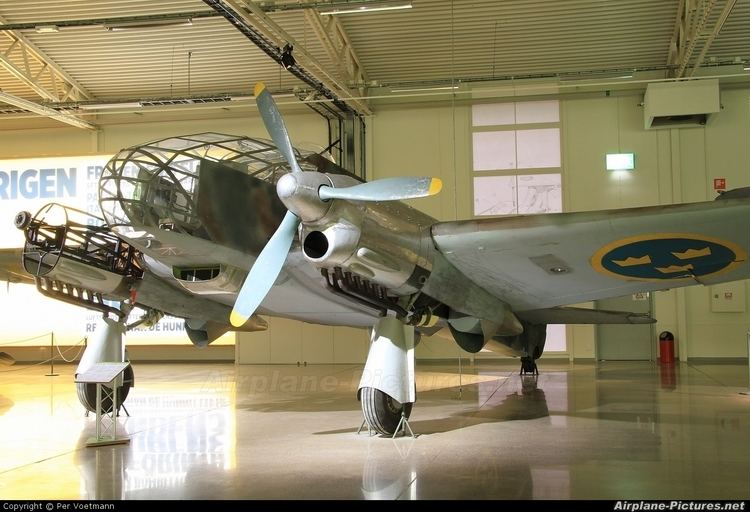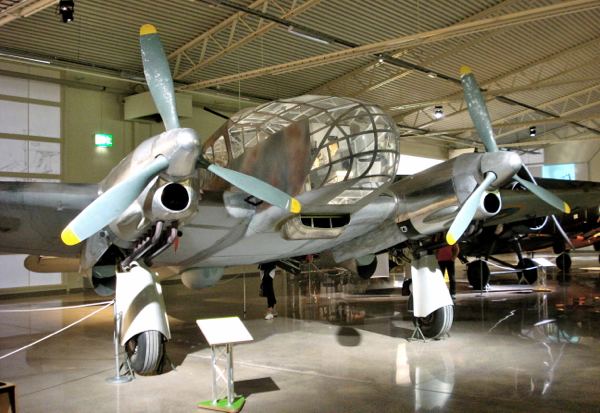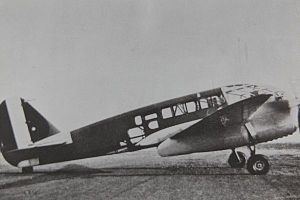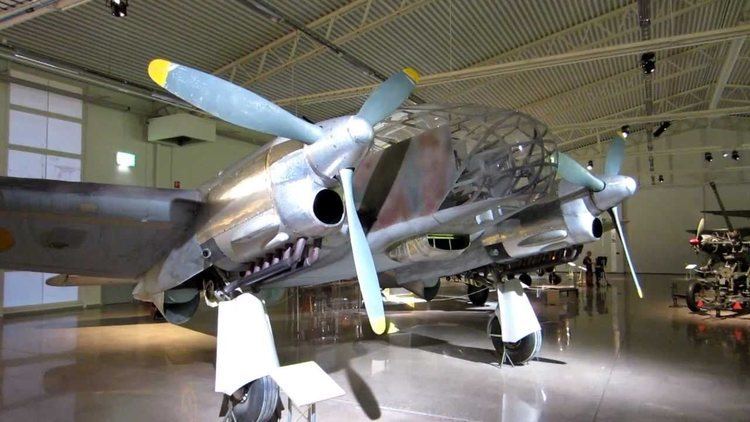Top speed 430 km/h Length 12 m | Wingspan 17 m First flight December 22, 1939 | |
The Caproni Ca.313 was an Italian twin-engine reconnaissance bomber of the late-1930s. It was a development of the Ca.310. Its variants were exported to several other countries.
Contents

Design and development

The Ca.313 was designed by Cesare Pallavicino. The prototype first flew on 22 December 1939. It was developed as a replacement of the Caproni Ca.311.

To save development time, the first Ca.313 was simply a modified Ca.310 with new engines. The final Ca.313 design was similar to the Ca.311 with inline engines. These engines, IF Delta RC 35 inverted V-12s, had a smaller frontal profile than the Piaggio P.VII C.35 radial engines they replaced. Due to the resulting lower aerodynamic drag, the Ca.313 was capable of more speed for the same power. Given the fact that 626 kW (840 hp) Fiat A.38 radial engines were needed for frontline fighters, there was no other choice for this aircraft.
The Ca.313 had a glassed-in nose, similar to the Heinkel He 111. This Caprioni, with its characteristic 'Z' hubs, engines mounted in the wings and retractable undercarriage, was of mixed construction, i.e. metal in the fuselage and wood in the wings.

Bomb load and defensive armament were typical of the time. The aircraft could carry 400 kg (880 lb) of bombs. Three 7.7 mm (0.303 in) Breda (or Scotti) machine guns were fitted - one in the left wing, one in a dorsal turret and one in the ventral position.

The main customer was the Regia Aeronautica (Italian Air Force), but many aircraft were ordered by other countries. France ordered 200 machines and Great Britain 300. Of these 500, only five Ca.313F units were delivered to France before Italy's entry into World War II.
Operational history
The aircraft served mainly with Italy, in the light transport, trainer and maritime reconnaissance roles. Swedish Air Force designations were B 16, S 16, T 16, and Tp 16.
The outbreak of war greatly affected Sweden's military buildup, as the USA stopped deliveries of hundreds of new US aircraft to Sweden (among them 60 P-35A and 144 P-66 Vanguards). Only 62 other airplanes had been delivered before the embargo took effect. To complete its war preparations, Sweden searched for other sources, eventually ordering 84 of the Caproni Ca.313S, 72 of the Fiat CR.42, and 60 of the Reggiane Re.2000, an order totaling some 90 million crowns.
The aircraft were delivered between 1940 and 1941. Between 1940 and 1943, there were 23 fatal accidents at the three air force bases (F 3, F 7 and F 11) that operated them. Three more were shot down by German fighters, on 18 and 23 May 1944. 41 crewmen died in these 'flying coffins'. The Ca.313 suffered many engine fires; this situation was not helped by the special fuel that was required. This fuel often corroded the tanks, causing leaks which would result in the fuel spilling onto the hot engines.
Other accidents occurred when the aircraft was used in a role for which it was not suited, such as dive bombing. For example, on 10 June 1942, one aircraft crashed following a wing failure. Many parts were not made to the correct standard. When it was realized that Sweden did not have the same accident problem, a modification programme was introduced and the rate of accidents dropped. For many years this machine, with its ten-hour endurance, was the only one capable of patrolling around Sweden. By all standards, it was obsolete by 1940. It was removed from service soon after the end of the war.
The Luftwaffe eventually ordered 905 machines called the CA.313G to be used for training purposes and other secondary employment, but only a few examples were delivered. They had a different nose from the standard model. Two series of Ca.313 had this nose difference and were called 'Ca.313 R.P.B.1 and 2.
In 1942, Croatia received ten Caproni Ca 311M bombers which had been ordered and paid for by the former Royal Yugoslav government.
Variants
Operators
Survivors
There are no original Ca.313 survivors. A replica built in Sweden for a TV miniseries using some original parts was put in the Flygvapenmuseum, Linköping, after filming was completed where it can still be seen.
Specifications (Ca.313)
General characteristics
Performance
Armament
